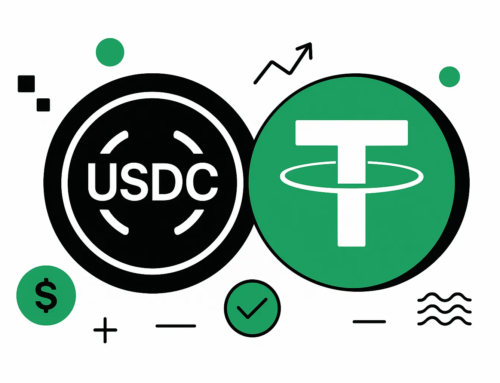With the evolution of the crypto world, the variety of products and services has greatly expanded and the possibilities of obtaining income from investments have therefore increased, even of obtaining remuneration for the mere fact of owning cryptocurrencies. This is staking and yield farming.
Staking and Proof of Stake (PoS)
To understand what staking is, it is necessary to clarify what is the Proof of Stake (PoS), the concept of staking in fact originates from the PoS algorithm.
PoS allows blockchains to operate with greater energy efficiency while maintaining a good degree of decentralization compared to the Proof of Work (PoW) option. The core idea of PoS is that participants can lock some cryptocurrency (their “stake”) and, periodically, the protocol will randomly assign one of them the right to validate the next block. The probability of being chosen is proportional to the amount of cryptocurrency the user locks: the higher the value, the higher the probability. Producing blocks through PoS allows, not only significant energy savings but also a greater degree of scalability for blockchains. For this reason, Ethereum‘s network began its migration from PoW to PoS in December 2020 via various technical updates known collectively as ETH 2.0.
Staking
Staking is generally about holding funds in a cryptocurrency wallet to support the security and operations of a blockchain network. In a nutshell, staking consists of locking cryptocurrencies in order to receive rewards.
In most cases, you can stake your coins directly from your crypto wallet. Many exchanges also offer stake services to their users. For example, Binance allows earning rewards just by keeping cryptocurrencies on the exchange. However, there may be constraints that depend on the platform: the requirement of a minimum balance for staking, the fact that the stake must be locked for a fixed period and, usually, a withdrawal period defined by the protocol. Staking rewards also vary depending on the platform, ranging from systems that offer fixed percentage fees to others that apply algorithms that consider various factors, such as the volume of funds staked by the user, how long the user has been staking, how much is the total volume of funds staked on the platform, etc. Multiple staking users can then come together in staking pools to increase their own weight and increase the gains produced, for example by increasing the likelihood to be chosen by the PoS as a block validator. Staking pools are also particularly useful on platforms that have entry barriers that each individual investor would not reach on their own. With the centralization of staking at the exchange platforms and services specifically created for this purpose, a new phase opens for this profitable instrument. It is no longer strictly necessary to hold one’s cryptocurrencies in one’s own wallet, which makes the system easier to use. However, it is important to rely on platforms that offer high security guarantees against cyber attacks.
Yield farming
Yield farming, or liquidity mining, is another way to make money using cryptocurrency funds. Like staking, it involves locking cryptocurrencies to receive rewards. On a general level, yield farming can be compared to staking. However, there is much more complexity involved.
Typically it involves users called liquidity providers (LPs), who add funds to liquidity pools on a platform, this liquidity is then used by the platform for example to lend to its users. A liquidity pool is nothing more than a smart contract that contains funds. In exchange for the liquidity provided to the pool, LPs receive a reward, which can be made up of fees generated by the underlying DeFi platform or from other sources. Some liquidity pools distribute rewards in different tokens, which can be deposited in other liquidity pools to earn money from there as well, and so on. Those involved in yield farming typically develop complex strategies aimed at maximizing investment returns by moving funds between platforms as opportunities arise. However, the basic idea is that a liquidity provider deposits funds into a liquidity pool and receives rewards in return. Yield farming is closely tied to a model called automated market maker (AMM) that typically involves liquidity providers (LPs) and liquidity pools. Using these platforms involves fees, which are then distributed to liquidity providers based on their share of the liquidity pool. This is the basic structure of how an AMM works, then each platform has its own specific features. As an example of a platform where one can do cryptocurrency yield farming, we can mention Curve Finance which is an automated market maker designed for exchanges between stablecoins. It is a decentralized liquidity aggregator where anyone can add assets to different liquidity pools and then earn fees. Other platforms in the AMM space are Compound Finance, MakerDAO, Aave, Uniswap.
Conclusions
The development of blockchain applications in DeFi is increasing the opportunities to generate revenue from just owning cryptocurrencies or from using sophisticated strategies to optimize the placement and use of one’s crypto assets. More opportunities will be created in the future due to technological developments and the interconnection between different blockchain platforms.








